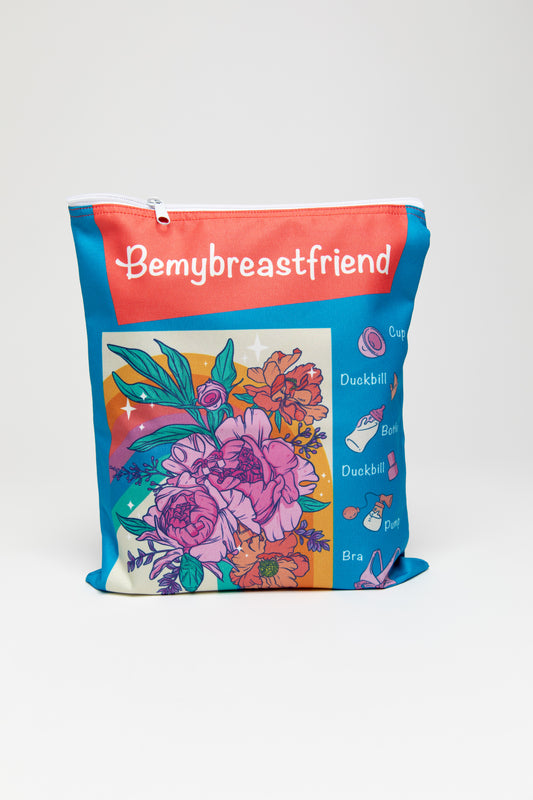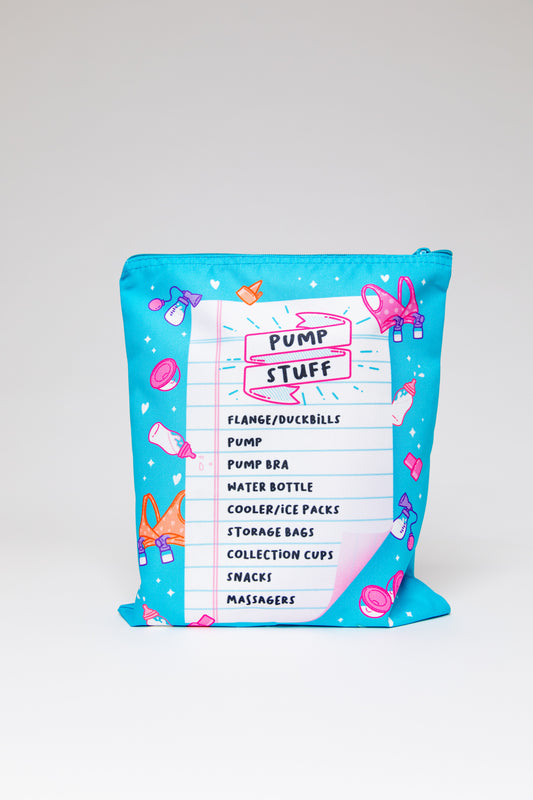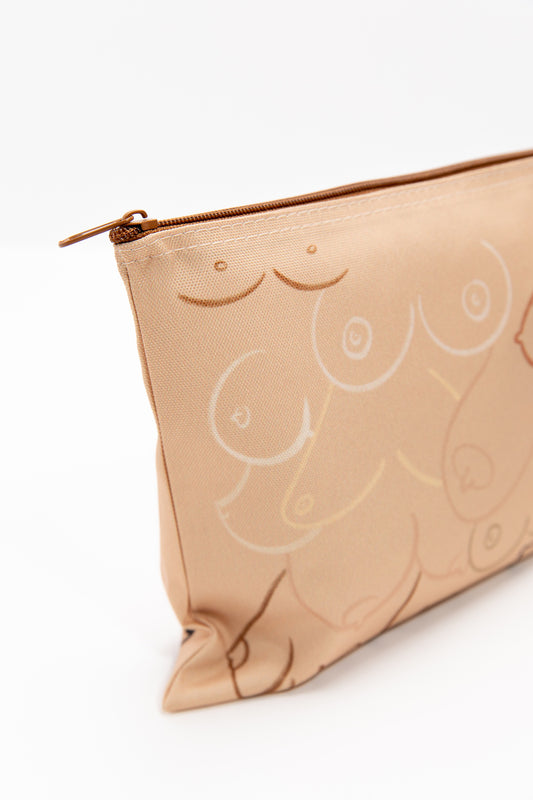
I could present you with 3 different breast pumps, all of which will be marketed as “breast pumps” but will all function differently for individual applications. It is not only important to understand the differences between these pumps but also which is the best way to apply them to your needs as a breast feeding mom. You might be solely feeding at the breast, exclusively pumping or headed back to work soon as a nursing mom and will need to rely more heavily on a breast pump to keep your supply elevated. Understanding that not all breast pumps function the same, nor do they all have the same ability to remove milk effectively will be key factors when deciding which breast pump is in your best interest and when to apply it!
Let’s approach this topic from the direction of pregnancy to postpartum. Yes, you may find you’ll be reaching for your pump nearing the end of your pregnancy.
Okay picture this, you’re nearing the end of your pregnancy, around 36 weeks or beyond and you have chosen to begin collecting colostrum antenatally in preparation of baby’s(ies) birth.
Reasons that might contribute to this choice could be related but not limited to known NICU stay following delivery, history of low milk supply, history of diabetes, exclusive pumping, not medically available to latch baby. With the approval of your provider and clearance of being able to engage in sexual intercourse, we are stimulating the same hormones after all, you should be given the go ahead to being your breastfeeding journey.
But how? My top recommendation when chatting colostrum will always be hand expression. No fancy stimulation or mechanical devices needed. First and foremost, colostrum is thick and does not typically flow as mature milk does. This being said we do not want any precious drops wasted or lost in our pumping accessories. Remember we aren’t filling 5 ounce bottles of colostrum, simply aiming to collect MLs (milliliters). While actively hand expressing colostrum our goal isn’t to, “make our milk come in” so we don’t need milk removal sessions like clock work. We are simply looking to collect smaller amounts over several sessions a day, ideally AM and PM, approx 5-10 mins total a session. If you’re unable to collect by hand due to weakness or discomfort I would then reach for a manual pump, still not an electric option. I have found the Medela Harmony is a great option when having complete control over nipple stimulation and removal.
Those early days postpartum can be a doozy with extra sensitive nipples, amiright? As an exclusive pumper I would consider treating your first day or two as you would your pregnancy milk removal. We are still talking small amounts of colostrum, but I get it, sometimes reaching for an electric motor is just easier. You have my blessing but just go slowly. We are still talking shorter sessions, only a few minutes, approximately 10-15 minutes, every 3 hours until you begin to see that rapid increase in your milk supply. Check out How to Choose Your First Breast Pump blog HERE! Spoiler alert I won’t be recommending any mobile pumps for the first 8-12 weeks of your pumping journey.
So let’s chat early postpartum and pump functionality. As you’ve read I’m all about the five finger discount method, using those hands for steady removal of colostrum with the aid of a manual pump if your hands become a bit tired. Manual pumps are an excellent inexpensive tool to keep in your back pocket. There’s no ideal time or place you can use this pump, you can keep it for emergency uses when the power goes out, in your purse for date night, in your hospital bag prepared to use if you find you need to help remove milk because baby may be too sleepy or unavailable to latch. It’s truly the best accessory to any breastfeeding experience.
Now let’s chat passive collection and where to implement these as an early postpartum mom. Did you know there’s two ways to use these passive collection pumps or also known as silicone pumps. These pumps are your Hakkaa, Boon Trove, Elvie Curve, Muu, etc, basically anything that is 100% silicone with no mechanical attachment available. These devices can be applied with suction or seated in the bra with minimal to no suction simply to collect a let down. Depending on your needs you may choose to apply them either way. Example: if baby is feeding on one breast but requires two breasts for a full feed you will not want to apply suction to the opposite breast, doing this may draw out their needed milk to complete their feed. Another example: say you’re driving to work and you’re a nursing mom but need some relief, you may apply suction to both silicone collection devices to help draw out milk to relieve pressure in your breasts, giving you time until the next time you’re baby is ready to feed. Or maybe you just have an aggressive let down and that milk is going to flow no matter what, but rather than let it go to waste you pop one of these in your bra opposite of baby and let it freely collect without any suction. As an exclusive pumper, you may not find an immediate need for these silicone collectors, although I don’t think they’re an unnecessary tool to have one hand. In addition to collecting milk these silicone pumps can be used to aid healing by filling collectors and allowing nipples to soak.
I know this is an unpopular opinion but I’m going to say it anyway, passive milk 'breast pumps' are not traditional breast pumps and cannot be relied on active removal to keep supply elevated. Why am I saying this? Because in am so sick of seeing misleading advertising suggesting that these style pumps, “can do what you want while you pump.” As an exclusive pumper, if I relied on these silicone devices to bring in, elevate or maintain my supply, well I’d be SOL with no milk supply and possible engorgement while I kept busy waiting for these pumps to “go to work”.
But here’s the catch. These devices do have the ability to help over stimulate supply and potentially cause an oversupply. This is not because you’re using them like a mechanical pump but due to the fact that they’re removing more milk than baby may require. These silicone devices are a handy tool to have on hand but should NOT be confused with any type of stimulating active removal of a full functioning pump. As I said earlier, without the help of active nipple stimulation and adequate removal by an actual pump or baby’s ability to remove milk, you’re not doing your supply any favors by relying on a silicone pump as a true mechanical pump.
One thing I want to toss in here about passive silicone collectors is to err on the side of caution if you’re trying to use these to relieve engorgement. These silicone collector can pull a real mean vacuum and can intensify edema at the nipple restricting milk to flow. If you find you’re engorged and you try to use a silicone pump to help move milk and nothing is flowing, consider lymphatic massage, reverse pressure softening and hand expression.
Okay dokie, it’s been a few days since baby arrived and you’re an exclusive pumper or mom who is finding themselves relying on a pump more frequently than baby to help move milk. This part is critical to helping your “milk come in”. Please do not fall for advertising, mobile pumps are (very likely) not your friend this early on. Yes, I know there are a small group of you that find them effective as primary use but you have my word when I say, this group of unicorns are very small. Choose an effective primary pump such as a Spectra S1, Unimom Opera, Motif Luna, Spectra Synergy Gold (not portable version), Baby Buddha or Pumpables Genie Advanced will always be in yours and your milk supply’s favor.

Baby Buddha use code BEMYBREASTFRIEND for 10% off
Pumpables Genie Advanced use code BREASTFRIEND for 10% off
*If you’re a nursing at breast mom you may not need the help of any pump and simply follows baby’s lead. If you choose to incorporate a breast pump this early on in addition to baby’s removal as primary be cautious and aware of how and when you’re doing this. This is a sure way to stimulate an oversupply, it’s also another way to remove milk from baby’s feedings they very well may need. If you’re looking to get ahead on a freezer stash I would recommend using a silicone device first before implementing any electric pump- you might be pleasantly surprised at what you’re able to collect and may not find the need to double pump. If you choose to use a breast pump this early on I would still recommend using something other than a mobile device AKA in your bra pump or cup. If you’re pumping, your objective is still to remove milk and unfortunately these mobile devices have a reputation of not being the most effective at removal. Until you’re familiar with your supply I wouldn’t jeopardize removal with any mobile or cup.
So now it’s been 8-12 weeks since baby arrived and you’ve grown familiar with your milk supply. You have an idea what to expect from your body and you’re ready to bring in other pump options for mobility and *hopefully* ease of use.
Mobile pumps, oh boy do I have a love/hate relationship with these bad boys. I’ll be the first to share these style pumps as an option to help lengthen your pumping journey based on the need to get up and go. I’ll also be the first to warn against too frequent use or too early use. My recommendations when considering to use these style pumps: Willow Go, Momcozy, collection cups paired with a portable pump option such as the Baby Buddha or Pumpables Genie Advanced, won’t be until you have a better understanding of your true milk supply. Around 8-12 weeks I would suggest as a safe time frame to bring these options into rotation but I’d also caution not using them more than 1/2 of your milk removal sessions in a 24 hour period. I am super grateful for these pumping options and love to lean into them especially as a mom of 4 (soon to be 5) but I respect the fact that they have a reputation of leaving milk behind due to a less effective seat on the breast when compared to a well fitted traditional flange. This is why I only use them on the go and make a true effort to have my most important sessions of the day, morning middle of the day and evening completed with an effective double electric primary breast pump. I may use my mobiles during the afternoon but I attempt to not allow these mobile sessions back to back, I try to break them up with better milk removal sessions to ensure adequate all day removals.








